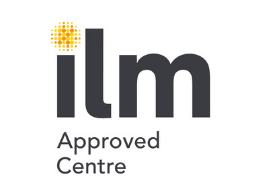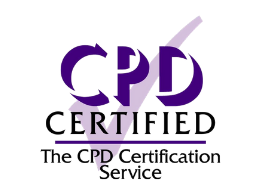The transition from a manager to leader is a significant shift that involves moving from simply managing tasks to leading and inspiring people. This journey is essential for anyone aspiring to have a more substantial impact within their organisation.
In this article, we will explore the key differences between managing and leading and the challenges of this transition and provide tips and strategies to help you succeed.
Understanding the Difference: Manager vs. Leader
Managing Tasks
As a manager, the primary focus is on managing tasks. This involves planning, organising, and coordinating activities to ensure that goals are met efficiently.
Managers typically:
- Set objectives and timelines
- Monitor performance and progress
- Solve problems and make decisions
- Ensure compliance with policies and procedures
Leading People
Transitioning to a leadership role involves shifting focus from tasks to people. Leaders inspire, motivate, and guide their teams towards achieving a shared vision.
Key characteristics of leaders include:
- Creating and communicating a clear vision
- Building trust and fostering collaboration
- Encouraging innovation and creativity
- Developing and empowering team members

Challenges in the Transition from Manager to Leader
Letting Go of Control
One of the biggest challenges in this transition from manager to leader is learning to let go of control. As a manager, you may be used to having a hands-on approach, but leadership requires you to delegate responsibilities and trust your team to deliver.
Developing Emotional Intelligence
Effective leadership demands a high level of emotional intelligence. This involves understanding your emotions, empathising with others, and managing interpersonal relationships judiciously and empathetically.
Shifting from Short-Term to Long-Term Thinking
Managers often focus on short-term goals and immediate results. Leaders, however, need to adopt a long-term perspective, considering the future direction of their team and organisation.
Tips and Strategies for a Successful Transition
Transitioning from manager to leader involves adopting new skills and mindsets. Here are detailed tips and strategies to help you successfully navigate this transformation.
Embrace a Leadership Mindset
Think Big Picture – To transition successfully, you need to embrace a leadership mindset. This means thinking beyond daily tasks and focusing on strategic goals and the bigger picture. Leaders envision the future, set long-term goals, and align their team’s efforts to achieve these objectives.
Cultivate a Growth Mindset – Adopt a growth mindset where you see challenges as opportunities for learning and improvement. This mindset encourages continuous leadership development and innovation, essential qualities for effective leadership.
Build Strong Relationships
Understand Your Team – Invest time in building solid relationships with your team members. Understand their strengths, weaknesses, and motivations. This understanding helps you assign tasks that align with their skills and interests, leading to higher engagement and productivity.
Foster Trust and Respect – Show genuine interest in your team’s personal and professional growth. Be approachable, supportive, and fair to foster an environment of trust and respect. Trust is the foundation of any strong relationship and is crucial for effective leadership.
Communicate Effectively
Be Clear and Transparent – Effective communication is crucial in leadership. Be clear and transparent in your communication. Ensure that your team understands the vision, goals, and expectations. Clear communication prevents misunderstandings and aligns everyone towards common objectives.
Listen Actively – Practice active listening. This means fully concentrating on the speaker, understanding their message, responding thoughtfully, and remembering what was said. Active listening builds trust and shows your team that their opinions and concerns are valued.
Foster a Positive Team Culture
Encourage Collaboration – Create a positive and inclusive team culture. Encourage collaboration by fostering an environment where team members feel comfortable sharing ideas and working together. Collaboration leads to better problem-solving and innovation.
Celebrate Successes – Celebrate successes, both big and small. Recognition and celebration of achievements boost morale and motivation. Make it a habit to acknowledge individual and team contributions regularly.
Learn from Failures – Cultivate an environment where failures are seen as learning opportunities. Encourage your team to take calculated risks and learn from their mistakes. This approach fosters a culture of continuous improvement and resilience.
Lead by Example
Demonstrate Integrity and Accountability – Set a strong example for your team by demonstrating the behaviours and values you expect from them. In all your actions, show integrity, accountability, and a strong work ethic. Leading by example builds credibility and trust.
Be Consistent – Consistency in your actions and decisions reinforces trust and reliability. Be consistent in how you treat team members, handle situations, and uphold values and principles.
Invest in Your Development
Seek Feedback – Continuous learning and self-improvement are vital for leadership development. Seek feedback from peers, mentors, and your team to gain insights into your strengths and areas for improvement. Constructive feedback is a valuable tool for growth.
Attend Leadership Training Programs – Invest in your development by attending leadership training programs, workshops, and seminars. These programs provide new perspectives, tools, and techniques to enhance your leadership skills.
Stay Updated – Stay updated with the latest trends and best practices in leadership. Read books, listen to podcasts, and follow thought leaders in the field. Keeping up-to-date helps you stay relevant and practical as a leader.
Empower Your Team
Delegate Effectively – Empower your team members by delegating responsibilities and giving them the autonomy to make decisions. Effective delegation involves assigning tasks that challenge and develop your team members’ skills.
Encourage Initiative – Encourage your team to take initiative and bring new ideas to the table. Please support their efforts and provide the necessary resources and guidance to help them succeed. Empowered team members are more engaged and motivated.
Develop Emotional Intelligence
Practice Self-Awareness – Work on improving your emotional intelligence. Start by practising self-awareness. Reflect on your emotions, strengths, and weaknesses. Understanding yourself better helps you manage your reactions and behaviours effectively.
Show Empathy – Show empathy by understanding and valuing your team members’ feelings and perspectives. Empathy builds solid connections and trust, which are essential for effective leadership.
Improve Social Skills – Enhance your social skills to build better relationships. This includes effective communication, conflict resolution, and collaboration. Strong social skills enable you to lead your team more effectively and create a positive work environment.

Leveraging 360-Degree Feedback for Leadership Development
Understanding 360-Degree Feedback
360-degree feedback is a comprehensive evaluation method where an individual receives feedback from multiple sources, including peers, subordinates, supervisors, and sometimes clients. This holistic approach provides a well-rounded view of one’s performance, behaviours, and impact on others especially when it comes to manager to leader profiles.
Benefits of 360-Degree Feedback
Comprehensive Insights – 360-degree feedback offers comprehensive insights into your leadership strengths and areas for improvement. This multi-perspective evaluation helps identify blind spots that might not be apparent through traditional feedback mechanisms.
Enhanced Self-Awareness – By receiving feedback from various sources, leaders can better understand how their actions and behaviours are perceived. This enhanced self-awareness is crucial for personal and professional growth.
Encouraging Continuous Improvement – The detailed feedback from 360-degree assessments encourages leaders to improve continuously. It highlights specific areas for development and provides actionable insights to enhance leadership effectiveness.
Implementing 360-Degree Feedback
Choose a Reliable Platform – Selecting a reliable platform, such as 360Progress, ensures the feedback process is smooth, confidential, and effective. A good platform will provide robust tools for collecting, analysing, and presenting feedback.
Set Clear Objectives – Before implementing 360-degree feedback, set clear objectives for your goal. Whether improving specific skills, enhancing team dynamics, or developing future leaders, having clear goals will guide the feedback process.
Communicate the Purpose – Ensure that all participants understand the purpose and benefits of 360-degree feedback. Clear communication helps gain buy-in and ensure that the input is taken seriously and constructively.
Take Action on Feedback – Receiving feedback is only the first step. The real value comes from taking action based on the insights gained. Develop a plan to address the areas for improvement and leverage your strengths effectively.
From Manager to Leader: Conclusion
The journey from manager to leader is a transformative process that requires a shift in mindset, skills, and approach. By embracing leadership qualities, building strong relationships, fostering a positive team culture, and leveraging tools like 360-degree feedback, you can make this transition successfully.
Remember, leadership is not about having control over everything; it’s about empowering and inspiring your team to achieve greatness together.







